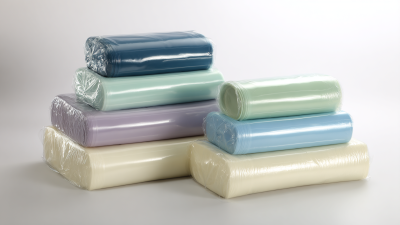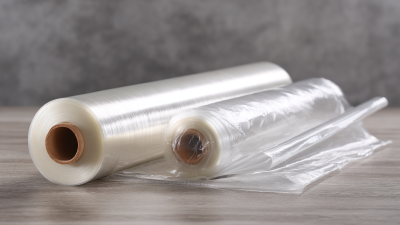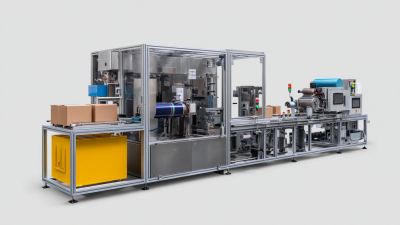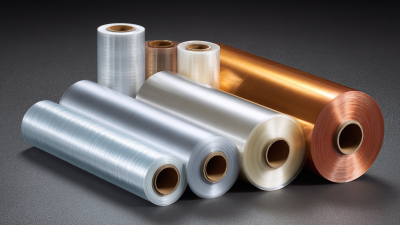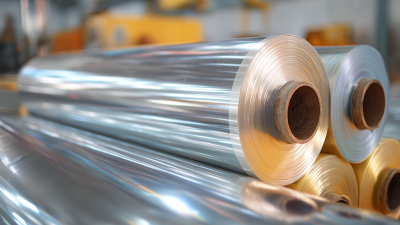Shrink Film Packaging has become an essential component in various industries, providing versatility and protection for a wide range of products. According to a recent report by Smithers Pira, the global shrink film market was valued at over $9 billion in 2021, and it is projected to grow significantly due to the increasing demand for efficient and sustainable packaging solutions.

With its ability to conform closely to product shapes, shrink film not only enhances product aesthetics but also minimizes the risk of damage during transportation and storage, highlighting its role in supply chain efficiency. Furthermore, as businesses strive for sustainability, advancements in biodegradable and recyclable shrink films are gaining traction, responding to the growing consumer demand for environmentally friendly packaging.
By optimizing your Shrink Film Packaging strategies, you can improve operational efficiency and ensure maximum protection for your products.
Shrink film packaging has become a crucial choice for various industries due to its efficiency and protective qualities. According to a report by Freedonia Group, the global shrink film market is projected to reach $9.8 billion by 2024, growing at a compound annual growth rate (CAGR) of 5.4%. This growth underscores the rising demand for effective packaging solutions that minimize product damage during transit while also maintaining aesthetic appeal on retail shelves.
One significant advantage of shrink film is its versatility, accommodating products of diverse shapes and sizes. The Flexible Packaging Association highlights that more than 50% of manufacturers have reported reduced packaging waste since integrating shrink film into their operations. Furthermore, a study by Smithers Pira reveals that 60% of brands are likely to switch to shrink film due to its cost-effectiveness and sustainability, with recycled content in such films becoming a prominent trend. These statistics demonstrate that shrink film not only enhances the protective capabilities of packaging but also supports environmental goals in today's eco-conscious market.

When optimizing shrink film packaging, several key factors significantly influence the efficiency of the application processes. One essential element is the choice of film thickness; studies indicate that using films between 45 to 75 microns can yield the best results for most applications, balancing strength and formability. Additionally, the temperature settings of heat tunnels play a crucial role, as optimal heat application can reduce cycle times by up to 30%. Consistent temperature control leads to uniform shrinkage, enhancing overall package aesthetics and protection.
Tip: Invest in an efficient heat tunnel system to ensure consistent temperature distribution, which can minimize energy costs and improve production speeds.
The design of the packaging also affects the shrink film application. A well-designed layout, considering product shape and size, can streamline the packing process, resulting in fewer film breaks and reduced waste. Research shows that implementing automated systems can increase packing line efficiency by 20% while maintaining high standards of safety and protection.
Tip: Evaluate the layout of your packaging line and consider integrating automation technologies to enhance productivity and reduce manual handling.
This chart illustrates the key factors influencing the efficiency of shrink film packaging processes, with a rating scale of 1 to 10. Higher values indicate greater efficiency in the application processes.
When it comes to optimizing shrink film packaging, understanding the various materials available is crucial for achieving maximum efficiency and protection. Low-density polyethylene (LDPE) is a popular choice for its favorable tensile properties and surface morphology. Recent studies have shown that LDPE films, particularly those with varying thicknesses, exhibit significant strength, making them suitable for applications requiring durability and resilience. As packaging needs evolve, the exploration of different film materials becomes essential for enhancing protective properties while minimizing environmental impact.

In addition to LDPE, emerging alternatives such as biodegradable films made from biopolymers are gaining traction in the packaging industry. These materials are designed to reduce the reliance on non-biodegradable plastics, thereby addressing growing environmental concerns. Furthermore, the development of sustainable bioplastics derived from renewable resources allows for a lower carbon footprint. The comparative analysis of these materials highlights the importance of not only selecting a film that meets protective requirements but also one that aligns with sustainability goals, ultimately driving innovation in shrink film packaging for a more efficient and eco-friendly future.
Shrink film packaging plays a crucial role in protecting products while enhancing their presentation. Leading brands have adopted successful strategies that not only promote their goods but also maximize efficiency. For instance, a recent report from Smithers Pira indicates that the global shrink film market is expected to reach $11.3 billion by 2025, driven by the demand for sustainable packaging solutions. Companies like Coca-Cola have implemented innovative shrink film techniques that reduce material use by 25%, showcasing how environmentally-friendly practices can also lead to significant cost savings.
**Tip 1**: Analyze the material properties of your shrink film to ensure it meets specific requirements such as puncture resistance or thermal stability. This not only enhances product protection but also prevents damage during the shipping process.
Another successful example is Procter & Gamble, which utilized shrink film to improve the shelf appeal of their products. Their design adjustments resulted in a 15% increase in customer engagement at retail spaces. By streamlining their packaging process and reducing waste, they also achieved a 20% reduction in production costs.
**Tip 2**: Consider investing in advanced automation technology for your shrink film packaging lines. This will not only optimize your workflow but also enhance consistency in packaging quality, ultimately contributing to better brand reputation.
Investing in high-quality shrink film is not just a decision for the present but a strategic move for long-term savings and efficiency in your packaging process. While the initial cost of premium shrink film may be higher than low-cost alternatives, the long-term benefits far outweigh these upfront expenses. High-quality films provide superior strength and durability, ensuring that products are well-protected during shipping and handling. This reduces the risk of damage, leading to fewer claims and returns, ultimately saving businesses money over time.
Moreover, utilizing high-quality shrink film can significantly enhance operational efficiency. These films often provide better heat shrinkage properties, resulting in faster and more streamlined packaging processes. By minimizing the time and energy spent on packaging, businesses can optimize their workflows, allowing for greater focus on production and distribution. The improved sealing strength and clarity of high-quality films also create a visually appealing presentation, positively impacting customer satisfaction and brand perception. Thus, investing in superior shrink film is a smart strategy that pays dividends through cost savings and enhanced operational performance.
